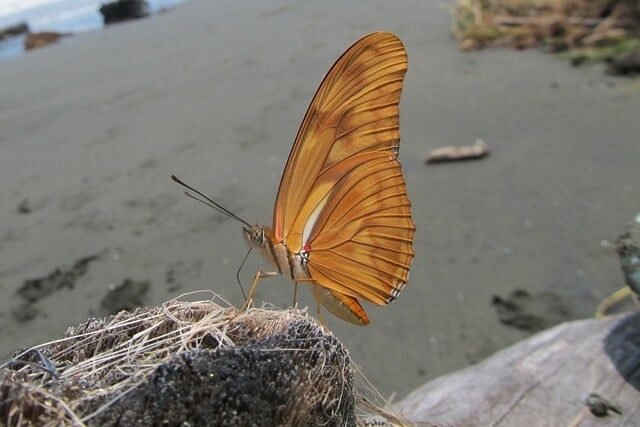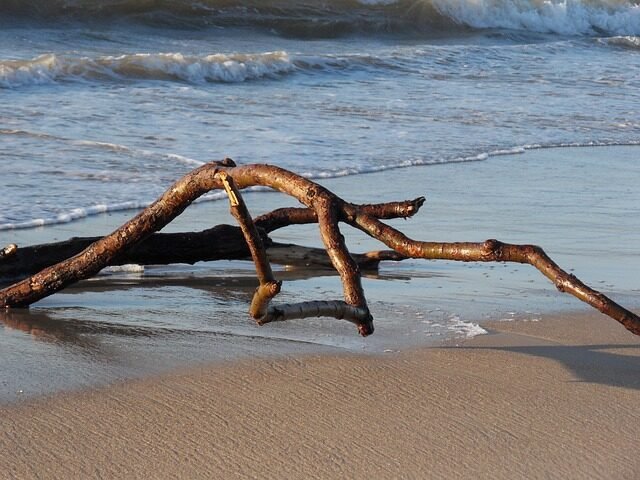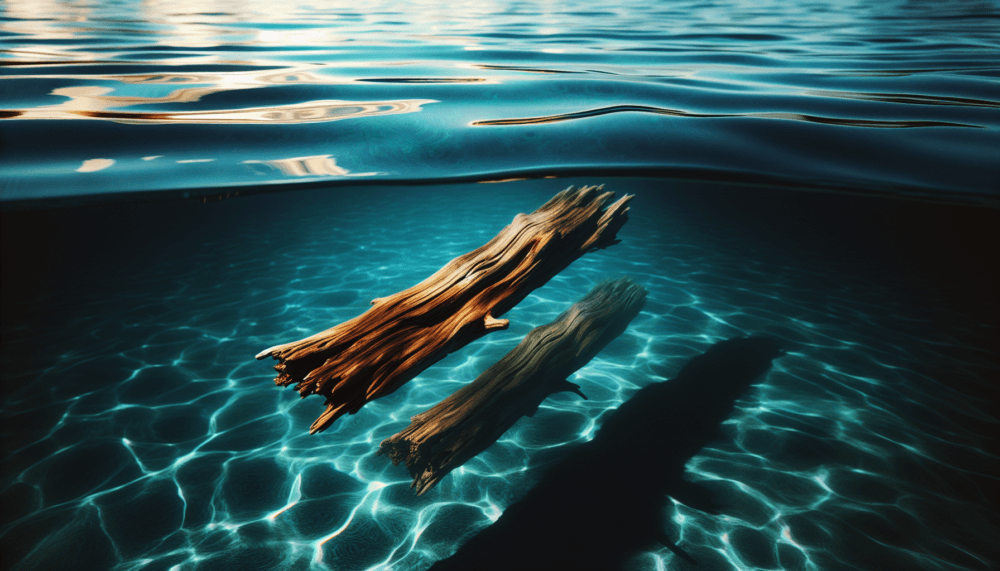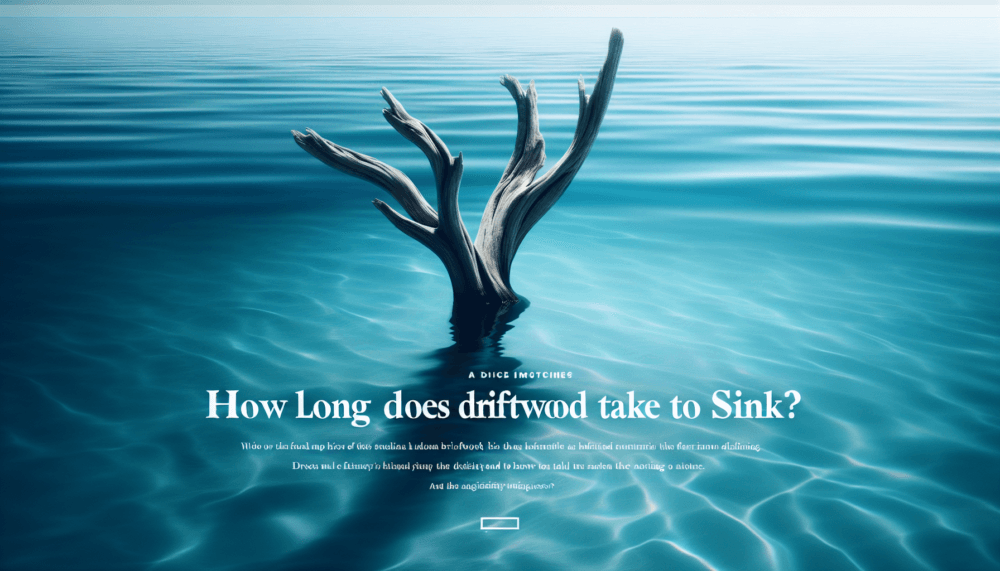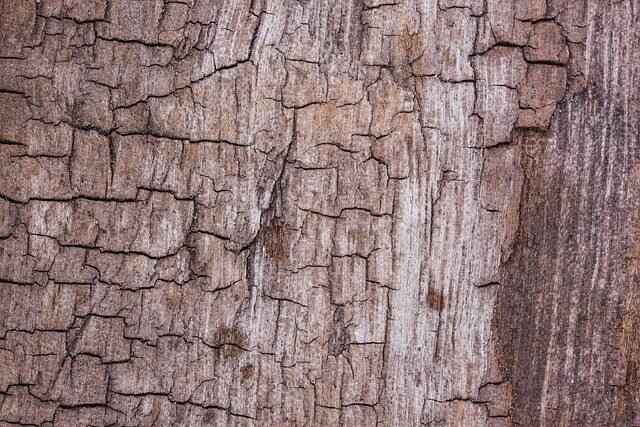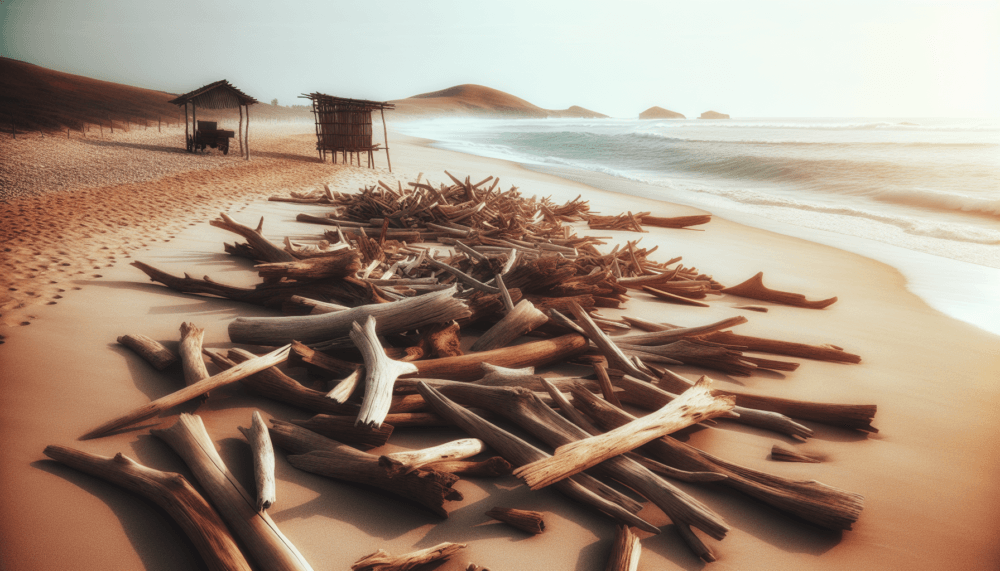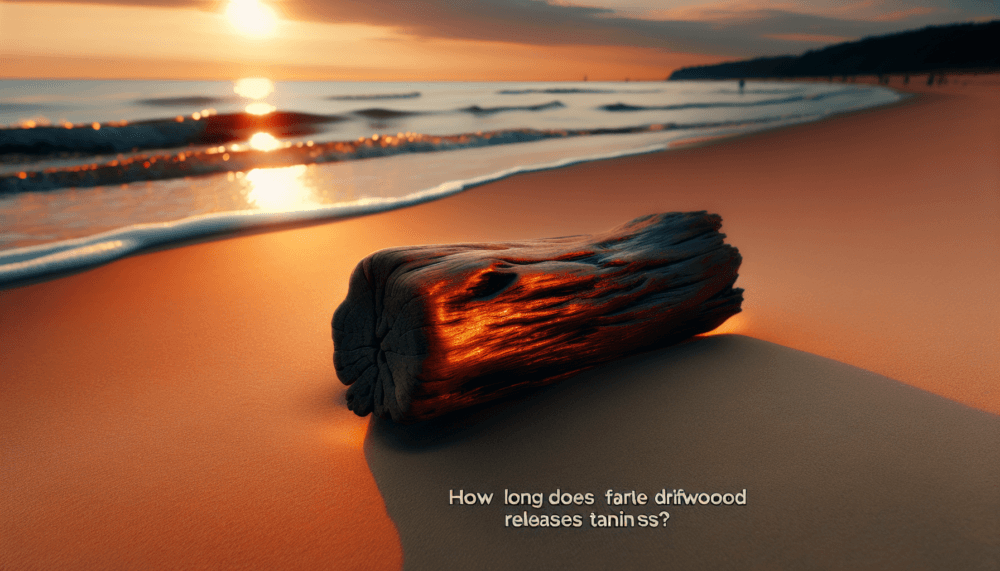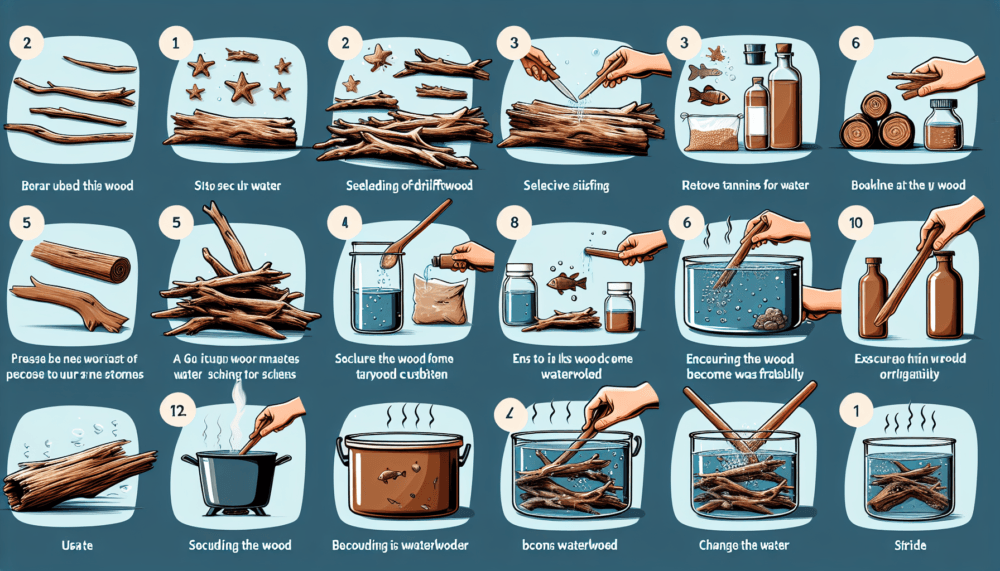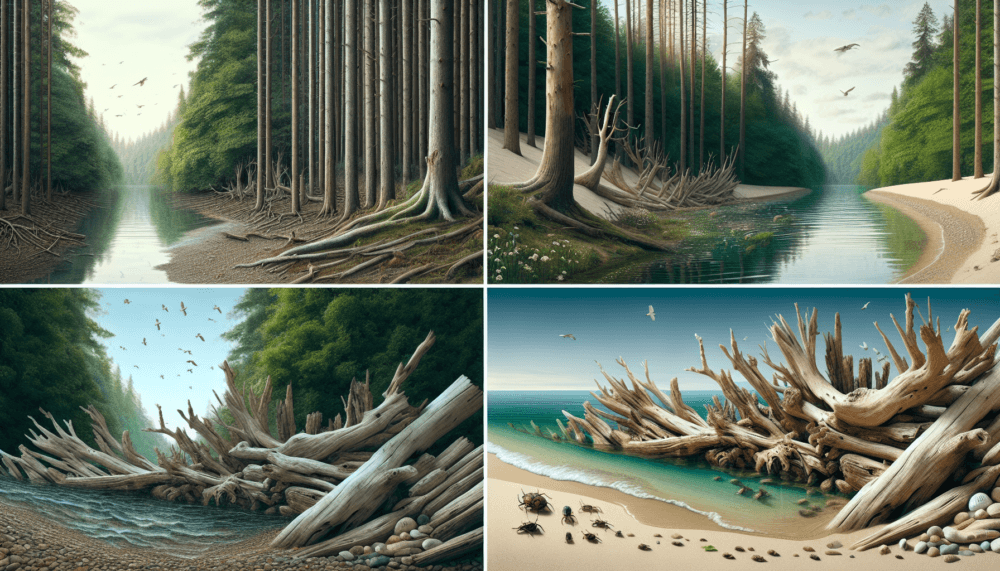Have you ever wondered how long it takes for driftwood to dry? Well, wonder no more! In this article, we will explore the fascinating process of drying driftwood and discover just how long it takes for nature to work its magic. From the factors that influence drying time to the best methods for speeding up the process, get ready to become an expert on all things driftwood drying. So grab a cup of tea, sit back, and let’s journey into the world of driftwood!

Factors Affecting Drying Time
Type and Composition of Driftwood
The type and composition of driftwood play a significant role in determining the drying time. Hardwood and softwood driftwoods have different densities and moisture content, which affect their drying rates. Hardwood driftwood, such as oak or mahogany, tends to have a higher density compared to softwood driftwood, like pine or cedar. Consequently, hardwood driftwood often takes longer to dry due to its denser structure and higher moisture content.
Size and Thickness of Driftwood
The size and thickness of driftwood also impact its drying time. Small and thin pieces of driftwood generally dry faster than larger and thicker pieces. This is because smaller pieces have less surface area and moisture content to evaporate, resulting in a quicker drying process. On the other hand, large and thick driftwood takes longer to dry as it contains more moisture within its fibers and has a larger surface area.
Environmental Conditions
The environmental conditions surrounding the driftwood greatly affect its drying time. Temperature and relative humidity are crucial factors that determine how quickly driftwood dries. Warmer temperatures facilitate faster evaporation of moisture, leading to quicker drying. Similarly, low humidity levels promote faster drying as the air has a higher capacity to absorb moisture. Conversely, colder temperatures and high humidity levels prolong the drying process, causing the driftwood to dry at a slower pace.
Sunlight Exposure
The exposure to sunlight can either expedite or delay the drying time of driftwood. Direct sunlight exposure can speed up the evaporation process and aid in the drying of the wood. The sun’s heat and energy help to evaporate the moisture trapped within the driftwood, reducing the drying time. However, prolonged exposure to direct sunlight may also lead to excessive drying, which could cause the wood to crack or warp. Indirect sunlight, on the other hand, provides a more balanced drying environment, helping to maintain the integrity of the driftwood while still facilitating evaporation.
Air Circulation
Proper air circulation is essential for the drying of driftwood. Natural air flow, such as from breezes or open windows, aids in the evaporation of moisture, allowing the driftwood to dry more efficiently. Additionally, using fans or ventilation systems can enhance air circulation around the wood, promoting faster drying. By ensuring sufficient air movement, the drying process is optimized, and the moisture content in the driftwood is reduced more effectively.
Humidity Levels
The humidity levels in the surroundings significantly impact the drying time of driftwood. High humidity environments impede the evaporation of moisture from the wood, prolonging the drying process. In such conditions, the air is already saturated with water vapor, making it difficult for the driftwood to release its moisture content. Conversely, low humidity environments enhance drying performance as the air has a higher capacity to absorb moisture, enabling the driftwood to dry more quickly.
Wood Density
The density of the driftwood also influences its drying time. Driftwood from different wood species can vary in density, affecting the rate at which moisture is released. Dense wood species, such as teak or ironwood, generally take longer to dry due to their compact structure and higher moisture content. On the other hand, porous wood species like balsa or willow have a lower density, making them dry relatively faster.
Moisture Content
The initial moisture content of the driftwood before drying is another determining factor in the overall drying time. If the wood has a higher moisture content initially, it will take longer to dry as more water needs to evaporate. Driftwood obtained from saltwater environments may have a higher moisture content compared to driftwood found in freshwater. Therefore, saltwater driftwood may require additional time to dry due to its higher moisture levels.
Treatment or Preparation
Any treatment or preparation applied to the driftwood can affect the drying time. If the driftwood has been treated with a sealant or preservative, it may take longer to dry as the coating restricts the moisture inside the wood from evaporating. Similarly, if the driftwood needs to be prepared before drying, such as removing bark or sanding rough edges, this additional process may prolong the overall drying time.
Drying Methods
Air Drying
Air drying is one of the most common and natural methods for drying driftwood. It involves allowing the driftwood to dry naturally in an open or well-ventilated area, exposing it to the surrounding air. Air drying provides a balanced drying environment, allowing moisture to evaporate without causing excessive drying or damage to the wood. The drying time for air drying driftwood varies depending on factors such as the type of wood, size, thickness, humidity levels, and environmental conditions.
Forced Drying
Forced drying is a method that expedites the drying process by introducing external heat sources or forced air circulation. This method involves using electric or gas-powered heaters or blowers to increase the temperature or airflow around the driftwood. Forced drying can significantly reduce the drying time but requires careful monitoring to prevent over-drying or damage to the wood. It is important to adjust the temperature and airflow to avoid excessive heat that could cause the driftwood to crack or warp.
Oven Drying
Oven drying is a controlled drying method that utilizes a conventional oven to remove moisture from driftwood. This method is suitable for smaller pieces of driftwood that can fit inside the oven. By setting the oven at a low temperature and placing the driftwood inside, the heat helps evaporate the moisture from the wood. However, it is crucial to monitor the drying process closely to prevent overheating the wood and damaging it. Oven drying may not be suitable for larger or thicker driftwood pieces due to space limitations and potential risks.
Microwave Drying
Microwave drying is a quick and efficient method suitable for small pieces of driftwood. By placing the driftwood in a microwave-safe container with a small amount of water, the moisture inside the wood is quickly heated and evaporated. It is essential to use caution with this method as the high heat generated in microwaves can cause the wood to catch fire. Careful monitoring and frequent checks are necessary to prevent overheating or burning the wood. Microwave drying is not recommended for larger pieces of driftwood due to size limitations.
Dehumidifying
Dehumidifying is a method that utilizes dehumidifiers to extract moisture from the surrounding air, facilitating the drying process. By reducing the relative humidity levels in the drying area, dehumidifiers create an optimal environment for moisture evaporation from the driftwood. This method is particularly effective in high humidity environments where traditional air drying may be challenging. However, it is important to ensure proper ventilation to prevent a buildup of heat or moisture around the driftwood.
Type and Composition of Driftwood
Hardwood vs. Softwood
The type and composition of driftwood can vary significantly based on whether it is hardwood or softwood. Hardwood driftwood, derived from deciduous trees such as oak or mahogany, is generally denser and has a higher moisture content compared to softwood driftwood. Consequently, hardwood driftwood tends to take longer to dry due to its denser structure and higher moisture levels. Softwood driftwood, obtained from coniferous trees like pine or cedar, has lower density and moisture content, which allows it to dry relatively faster.
Decay and Rot
The presence of decay or rot in driftwood can affect its drying time and overall condition. Driftwood that has started to decay or rot may have a higher moisture content and structural instability, which prolongs the drying process. It is advisable to remove any decaying or rotten portions of driftwood before drying to prevent further damage or moisture retention. By removing decayed sections, the drying time can be significantly reduced, resulting in better-preserved and more usable driftwood.
Saltwater vs. Freshwater Driftwood
The environment in which driftwood is found, either in saltwater or freshwater, can impact its drying time. Saltwater driftwood often has a higher moisture content due to prolonged exposure to water, making it take longer to dry. The salt content in saltwater driftwood can also affect its drying time, as the presence of salt can hinder moisture evaporation. On the other hand, freshwater driftwood typically has a lower moisture content and can dry relatively faster as it has not been exposed to the corrosive effects of salt.
Toxicity and Chemical Composition
The toxicity and chemical composition of driftwood should be considered during the drying process. Some driftwood species may contain toxic substances or chemicals, which can pose health risks if not adequately handled or dried. Researching the specific species of driftwood and its potential toxins is crucial to ensure proper safety precautions are taken. If toxicity is a concern, it is recommended to contact a professional or seek expert advice on the best methods for drying and handling the specific driftwood species.
Size and Thickness of Driftwood
Small and Thin Pieces
Small and thin pieces of driftwood tend to dry faster compared to larger and thicker pieces. Due to their reduced surface area and lower moisture content, small and thin pieces allow for quicker evaporation of moisture. The drying process is more efficient for these pieces as the air can penetrate the wood more effectively, expediting the moisture release. Therefore, if you are looking to dry driftwood in a shorter timeframe, opting for smaller and thinner pieces would be beneficial.
Large and Thick Pieces
Conversely, larger and thicker pieces of driftwood take longer to dry due to their greater surface area and higher moisture content. The dense fibers and concentrated moisture within these pieces slow down the evaporation process, resulting in an extended drying time. It is important to consider the size and thickness of the driftwood when planning the drying process. If drying larger or thicker pieces, additional time and patience will be required to ensure thorough and effective drying.

Environmental Conditions
Temperature
The temperature of the surrounding environment significantly influences the drying time of driftwood. Warmer temperatures promote faster evaporation of moisture, accelerating the drying process. The heat increases the energy of water molecules, allowing them to escape from the wood more readily. Lower temperatures, on the other hand, impede the rate of evaporation, extending the drying time. Therefore, maintaining a warmer temperature in the drying area can contribute to reducing the overall drying time of driftwood.
Relative Humidity
Relative humidity, which measures the amount of moisture in the air compared to its maximum capacity, plays a crucial role in the drying of driftwood. Lower relative humidity levels facilitate faster evaporation of moisture from the wood, resulting in quicker drying. In contrast, high relative humidity levels hinder the evaporation process, prolonging the drying time. To expedite the drying process, it is advisable to choose a drying location with lower relative humidity levels or use dehumidifiers to reduce moisture in the air.
Sunlight Exposure
Direct Sunlight
Exposure to direct sunlight can have both positive and negative effects on the drying time of driftwood. Direct sunlight provides heat and energy that accelerate the evaporation process, aiding in the drying of the wood. The sun’s rays penetrate the driftwood, warming the moisture within and facilitating its release. However, prolonged exposure to direct sunlight can lead to excessive drying, causing the wood to crack or warp. It is crucial to monitor the driftwood closely and ensure it is not left exposed to direct sunlight for extended periods.
Indirect Sunlight
Indirect sunlight can provide a more balanced drying environment for driftwood. It still contributes to the evaporation of moisture but with reduced risk of rapid and uneven drying. Indirect sunlight allows the driftwood to dry while maintaining its structural integrity by preventing excessive heat or moisture loss. This method is particularly useful when drying more delicate or vulnerable pieces of driftwood that may be prone to damage from direct sunlight. By placing the driftwood in an area of indirect sunlight, the drying time can be optimized without compromising the wood’s quality.
Shade or Cover
Another option for drying driftwood is placing it in shaded areas or using covers to shield it from direct sunlight. Shade or covers provide protection from excessive heat and sunlight, creating a more controlled drying environment for the driftwood. By preventing direct exposure to the sun’s rays, the risk of accelerated or uneven drying is reduced. This method is especially beneficial for larger or thicker pieces of driftwood that may require longer drying times and are more susceptible to damage from prolonged exposure to direct sunlight.
Air Circulation
Natural Air Flow
Natural air flow, such as from breezes or open windows, is vital for efficient drying of driftwood. The movement of air helps carry away the evaporated moisture, allowing fresh air to come into contact with the driftwood. This exchange of air promotes the continuous evaporation of moisture and enhances the drying process. It is advisable to position the driftwood in an area with sufficient air movement to ensure proper drying and prevent any stagnation of moisture around the wood.
Use of Fans or Ventilation
To optimize air circulation and drying performance, the use of fans or ventilation systems can be beneficial. Fans help increase the airflow around the driftwood, enhancing the evaporation of moisture. When using fans, it is important to position them strategically to ensure even distribution of air across the entire drying area. By utilizing fans or ventilation, the drying time can be shortened, and the effectiveness of the drying process can be enhanced.
Humidity Levels
High Humidity Environments
High humidity environments pose challenges to the drying of driftwood. In such conditions, the air is already saturated with moisture, making it difficult for the driftwood to release its own moisture content. The excess humidity impedes the evaporation process, resulting in a significantly extended drying time. To overcome this, it is recommended to dry driftwood in areas with lower humidity levels or use dehumidifiers to reduce the moisture in the air.
Low Humidity Environments
Conversely, drying driftwood in low humidity environments facilitates faster moisture evaporation and reduced drying time. In areas with lower humidity levels, the air has a higher capacity to absorb moisture, aiding in the drying process. Choosing a drying location with low humidity or using dehumidifiers to regulate the moisture content can help optimize the drying performance and achieve desired results within a shorter timeframe.
Wood Density
Dense Wood Species
Driftwood derived from dense wood species, such as teak or ironwood, generally takes longer to dry due to their compact structure and higher moisture content. The denser the wood, the slower the moisture release, as the water molecules are held more tightly within the wood fibers. Dense wood species require additional time and patience during the drying process to ensure thorough moisture evaporation. Proper consideration of the wood density is crucial when planning the drying time for driftwood.
Porous Wood Species
Porous wood species, like balsa or willow, have a lower density, which allows moisture to evaporate more quickly. The porous structure facilitates the movement of water molecules, enabling faster drying times for driftwood made from these species. The moisture content in these wood types is released more readily due to the larger air spaces within the wood fibers. When working with porous wood species, the drying time can be reduced, allowing for quicker utilization and crafting of the driftwood.
Dehumidifying
Using Dehumidifiers
Dehumidifiers are valuable tools when it comes to drying driftwood, particularly in high humidity environments. Dehumidifiers remove moisture from the surrounding air, creating an optimal drying environment for the wood. By reducing the relative humidity levels, dehumidifiers enhance the evaporation of moisture from the driftwood, expediting the drying process. Placement of the driftwood near or within the range of the dehumidifier further improves the drying efficiency and helps achieve desired results in a shorter timeframe.
Optimal Conditions for Dehumidifying
To achieve the best results when using dehumidifiers for drying driftwood, it is important to establish optimal conditions. The recommended relative humidity range for dehumidifying driftwood is around 40-50%. This level allows for efficient moisture evaporation without causing excessive dryness or damage to the wood. Monitoring the humidity levels and adjusting the dehumidifier settings accordingly will help maintain the optimum drying environment and ensure the desired outcome.
Effectiveness and Timeframe
The effectiveness and timeframe of dehumidifying largely depend on the initial moisture content, environmental conditions, and the size and density of the driftwood. In general, dehumidifying can significantly reduce the drying time compared to traditional air drying methods, especially in high humidity environments. However, it is important to note that larger or denser pieces of driftwood may still require additional time even with dehumidifiers. Regular monitoring and adjustment of settings are essential to achieve the desired moisture levels and prevent over-drying or damage to the wood.
